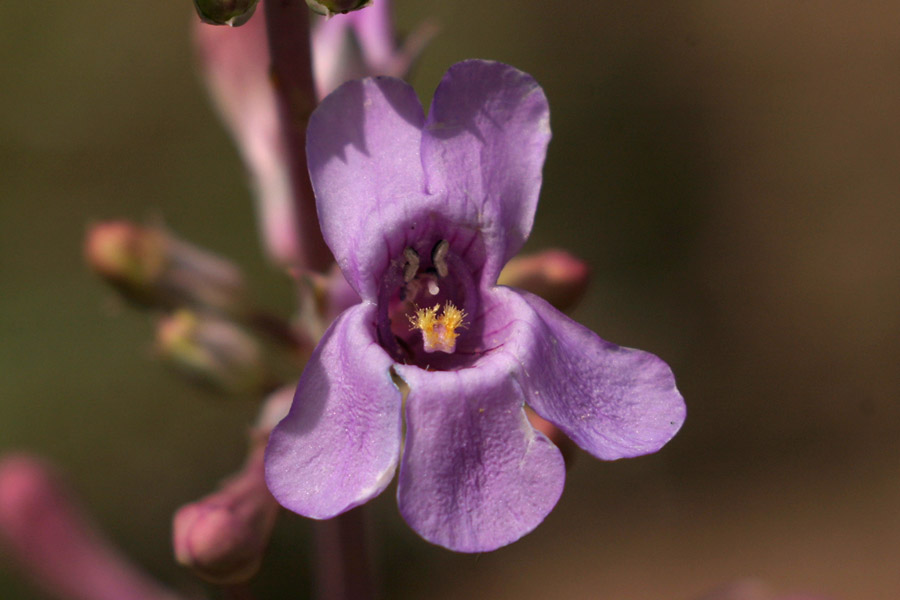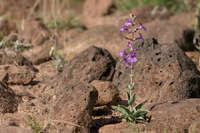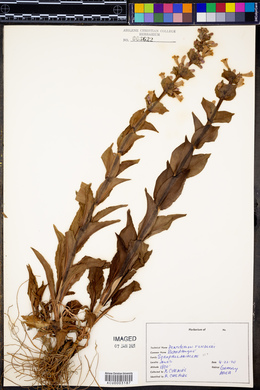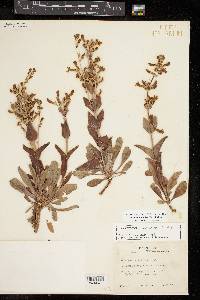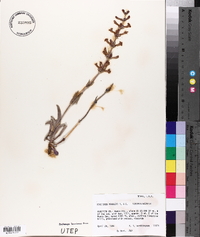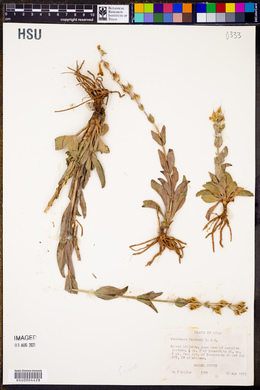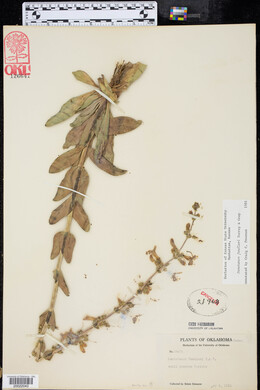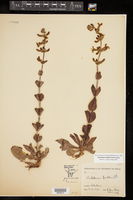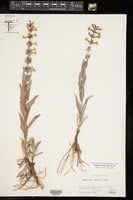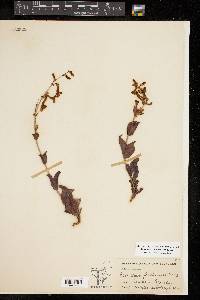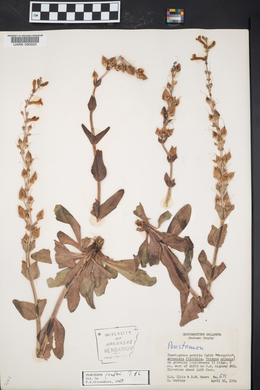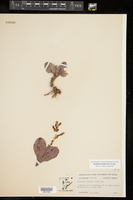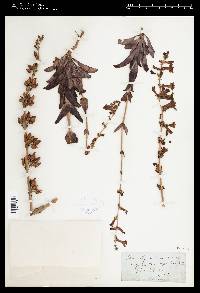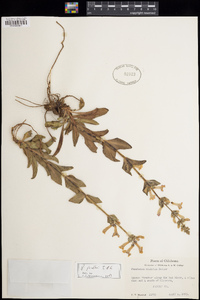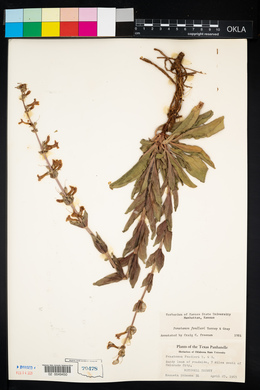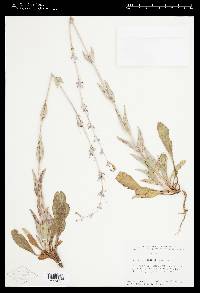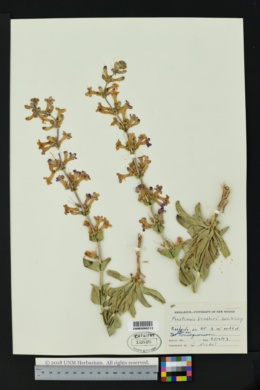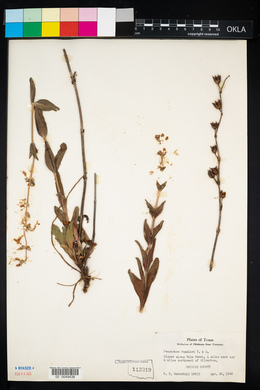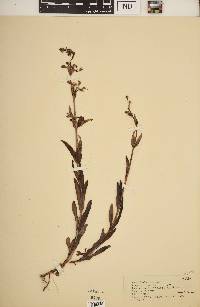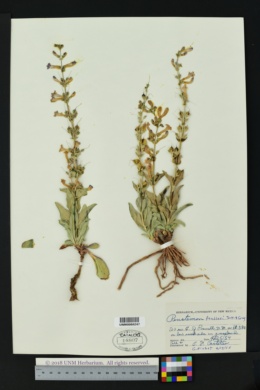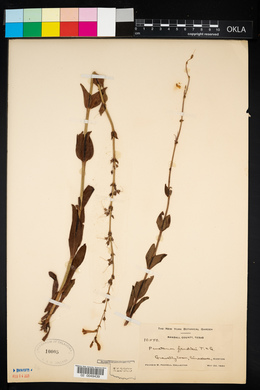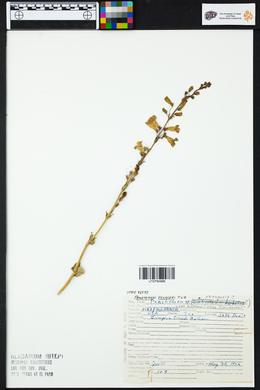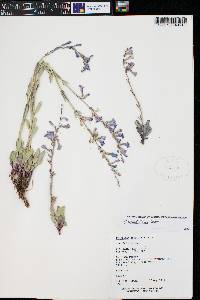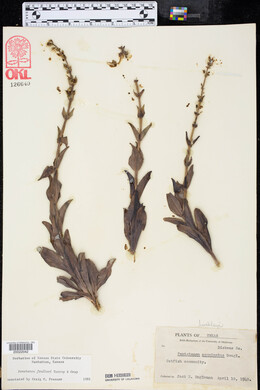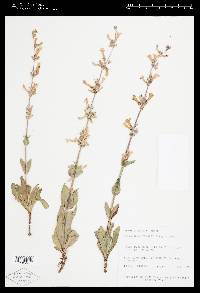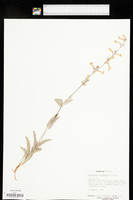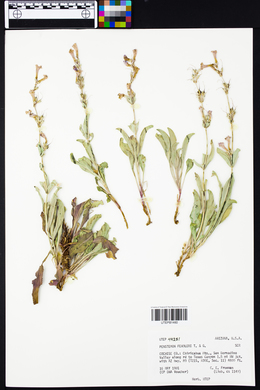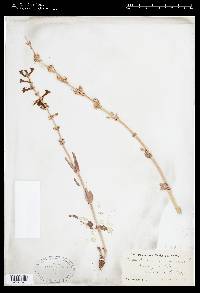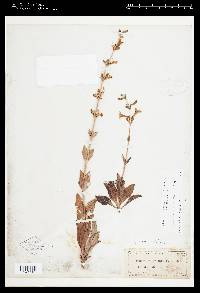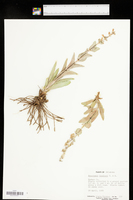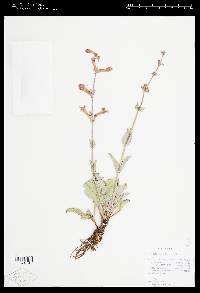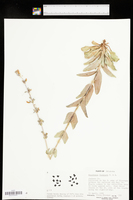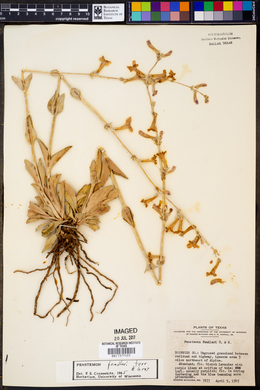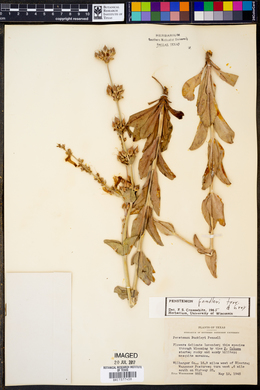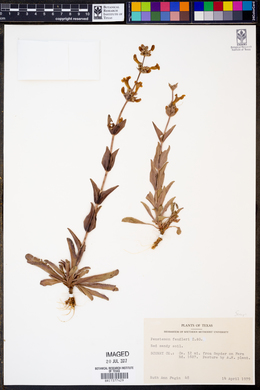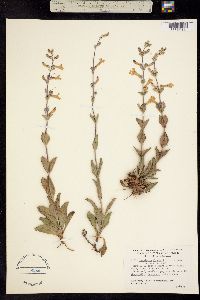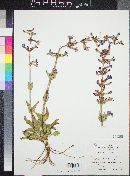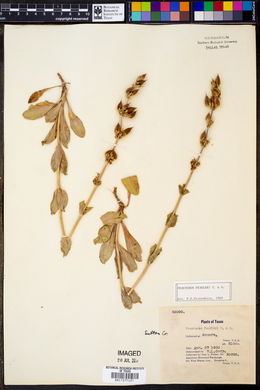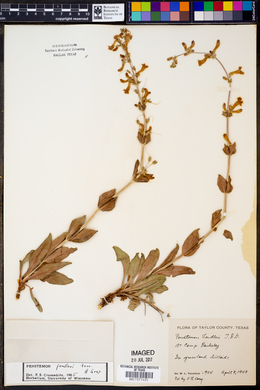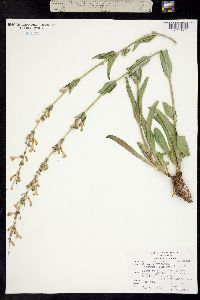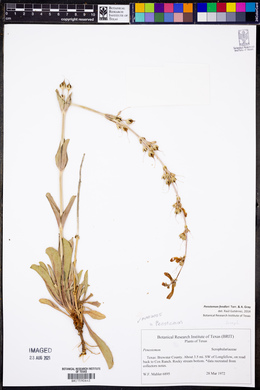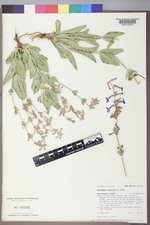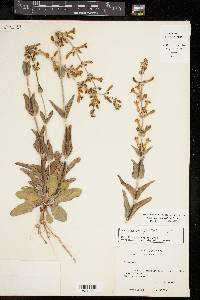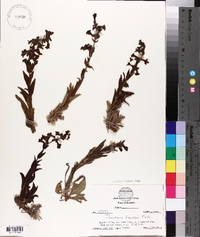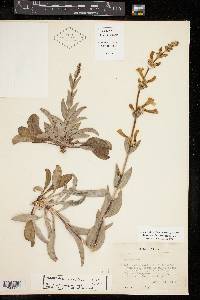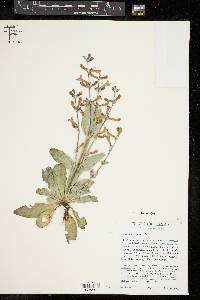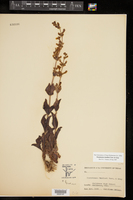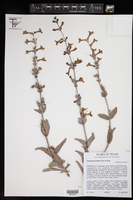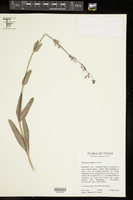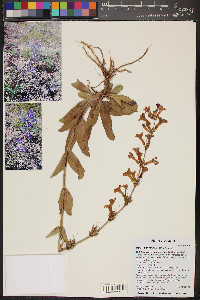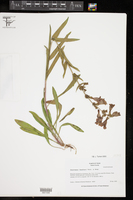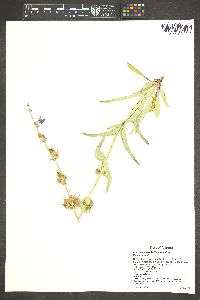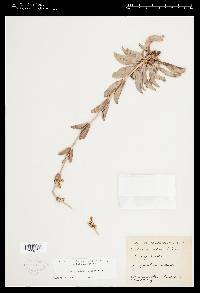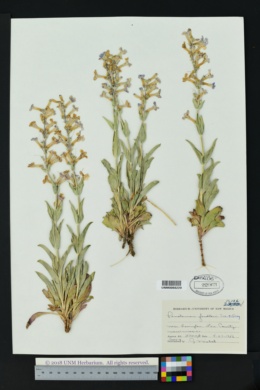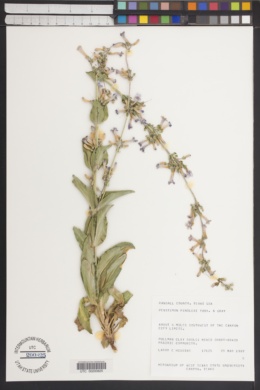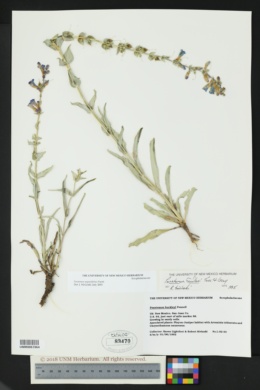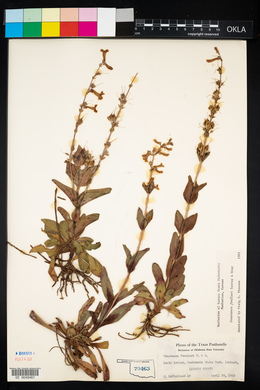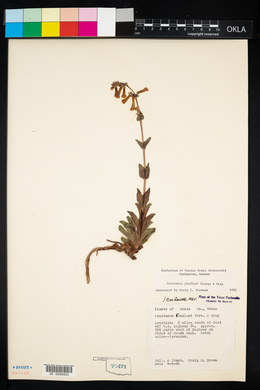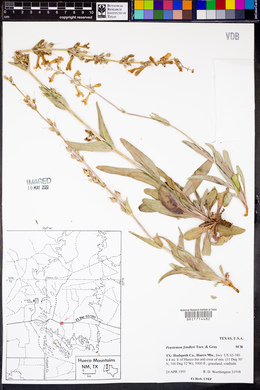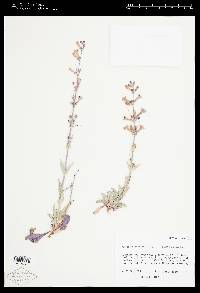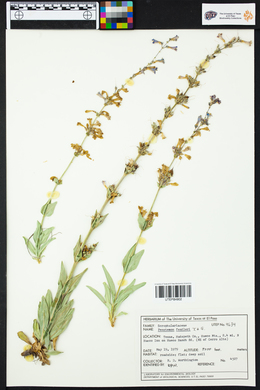Penstemon fendleri
|
|
|
|
Family: Plantaginaceae
Fendler's Beardtongue, more...Fendler's penstemon, Fendler beardtongue, fendler penstemon
|
Penstemon fendleri is a lower elevation herb with glaucous lanceolate leaves that are are gently folded upwards but not creased. The cauline leaves are clasping. The corolla is lilac in color and ascending. Penstemon fendleri is found on dry mesas and meadows.
Freeman, in prep (draft for FNA vol. 17), Correll and Johnston 1970, Steiber 1986 Duration: Perennial Nativity: Native Lifeform: Forb/Herb General: Perennial herb, 20-60 cm tall, from a woody caudex; stems usually 1 or 2 per plant, erect and stiff; entire plant glabrous. Leaves: Opposite along the stems and also in a basal cluster; lower leaves petiolate and upper leaves sessile and clasping the stem; blades spatulate to lanceolate, 2-10 cm long and 4-30 mm wide, gently folded upward along the midvein. Flowers: Lavender and showy; arranged in narrow interrupted panicles, 10-40 cm long, at the tops of the branches; sepals 5 per flower, ovate, 5-7 mm long, with white-papery (scarious) margins; corolla 14-28 mm long, tubular-salverform and 2-lipped, with the 2 upper lobes abruptly spreading away from the corolla tube at a right angle, and the lower 3 lobes projecting (not curved outward or inward) or spreading away from the corolla tube; corolla color lavender to violet or bluish, with the inner surface of the corolla tube marked with violet or reddish nectar guide lines. Staminode (single sterile stamen) just reaches corolla orifice, with the tip recurved and covered with golden hairs. Fruits: Capsules 10-15 mm long and 8-10 mm wide; splitting open longitudinally to release brown, angled seeds, 3 mm long. Ecology: Found in sandy or gravelly soil in mixed-grass, shortgrass, and sandsage prairies, below 7,500 ft (2300 m); flowers March-June. Distribution: KS, NM, OK, TX; south to n MEX Notes: This purple-flowered Penstemon is common in the southwestern Great Plains. It is distinguished from other purple Penstemons based on its glabrous, slightly glaucous (white-waxy) foliage; the leaves which are gently folded upward along the midvein; the flower size, 14-28 mm long; the tubular-salverform shape of the corolla; and the inflorescence, which is generally cylindrical (some other species have secund, or one-sided inflorescences, with all the flowers emerging from one side of the central axis). Distinguish from P. ophianthus, P. jamesii, and P. virgatus based on the corolla shape, which is asymmetrically inflated in those species (P. fendleri has a tube- to funnel-shaped corolla, and is not inflated). Ethnobotany: Ramah Navajo used it to treat arrow and gunshot wounds. Etymology: Penstemon comes from the Latin paene, nearly or almost, and Greek stemon, thread, alluding to the single sterile stamen within each flower; fendleri honors Augustus Fendler (181301883), a Prussian-born natural history collector who worked in America. Synonyms: None Editor: FSCoburn 2015, AHazelton 2017 |

